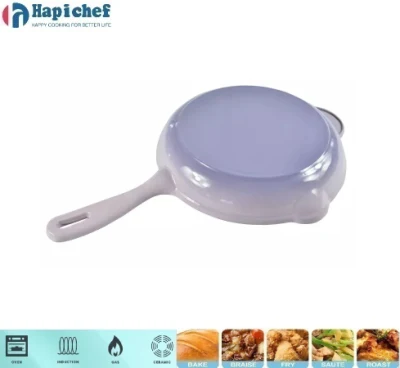Essential Tips for Cleaning Your Cast Iron Wok Effectively and Safely
Cleaning and Maintaining Your Cast Iron Wok
Cast iron woks are revered for their heat retention and even cooking, making them a beloved choice in many kitchens. However, proper cleaning and maintenance are critical to ensure their longevity and performance. In this article, we'll explore effective methods for cleaning your cast iron wok while preserving its non-stick properties and preventing rust.
Understanding the Nature of Cast Iron
Before diving into the cleaning process, it’s important to understand how cast iron works. Unlike stainless steel, cast iron requires a bit of extra care—especially after cooking with it. The natural seasoning of a cast iron wok not only provides a non-stick surface but also protects the metal from rusting. Thus, it's essential to approach cleaning with caution to avoid stripping away this seasoning.
Cleaning Steps
1. Cool Down After cooking, allow your wok to cool down gradually. Placing a hot wok under cold water can cause it to warp, and this method should be avoided.
2. Scraping Residue For any food stuck to the surface, use a wooden spatula or a spatula made of silicone. Avoid metal scrubbers or harsh tools as they can scratch the seasoning. If your wok has burnt-on food, you might want to let it soak in warm water for a short period to loosen the residue.
3. Washing After scraping, rinse your wok under warm water. Use a small amount of mild dish soap if necessary. While traditional advice often suggests avoiding soap altogether, occasional light washing with soap is generally acceptable as long as it’s not used excessively.
4. Stubborn Food Particles If stubborn dirt remains, consider using a non-abrasive scrubber or a natural abrasive like coarse salt. Sprinkle salt onto the surface and scrub with a cloth or sponge. This effectively removes stuck food without damaging the seasoning.
cast iron wok cleaning

5. Rinse and Dry Rinse your wok thoroughly with hot water and immediately dry it with a clean cloth. It’s crucial to dry your wok quickly to prevent moisture from causing rust.
6. Re-seasoning After cleaning, you may need to re-season your wok occasionally, depending on how often you use it. To do this, apply a thin layer of vegetable oil or flaxseed oil over the entire surface, inside and out. Place the wok upside down in a preheated oven (around 375°F or 190°C) for about an hour, allowing the oil to bake into the surface and build up that sought-after seasoning.
Avoiding Common Mistakes
- Soaking Avoid soaking your cast iron wok for long periods. Prolonged exposure to water can lead to rust. - Dishwasher Never place your cast iron wok in the dishwasher. The harsh detergents and the prolonged water exposure can strip away the seasoning and damage the iron. - Using Oil Sprays Avoid non-stick cooking sprays on your wok, as they can create a buildup that is difficult to clean.
Additional Maintenance Tips
- Store Properly When storing your wok, keep it in a dry place. If it’s stacked with other cookware, consider placing a paper towel inside to absorb any moisture and prevent scratching. - Regular Use The best way to maintain your wok is through regular use. Cooking fatty foods can help maintain and enhance the seasoning, keeping your wok in prime condition. - Inspect for Rust Regularly check your wok for any signs of rust. If you spot any, don’t panic – simply scrub the rust off with a steel wool pad, rinse, dry, and then re-season.
Conclusion
Caring for your cast iron wok does require some effort, but the rewards are well worth it. Proper cleaning and maintenance ensure your wok remains a valuable kitchen asset, enhancing your culinary creations. With careful attention, your cast iron wok can last for generations, making it a cherished piece for many family meals yet to come. Happy cooking!
-
Why Every Home Cook Needs a Cast Iron Meat PressNewsNov.12,2024
-
Unlock Perfectly Seared Steaks with the Cast Iron Meat PressNewsNov.12,2024
-
Master the Art of Cooking Thick Cuts of Meat with a Cast Iron Meat PressNewsNov.12,2024
-
How to Care for Your Cast Iron Meat Press: Tips for Longevity and PerformanceNewsNov.12,2024
-
How a Cast Iron Meat Press Enhances the Flavor and Texture of Your BurgersNewsNov.12,2024
-
Roasting Pan for Perfect MealsNewsNov.04,2024
-
Perfect Skillet for SaleNewsNov.04,2024
